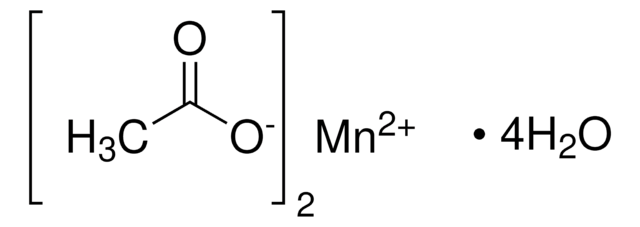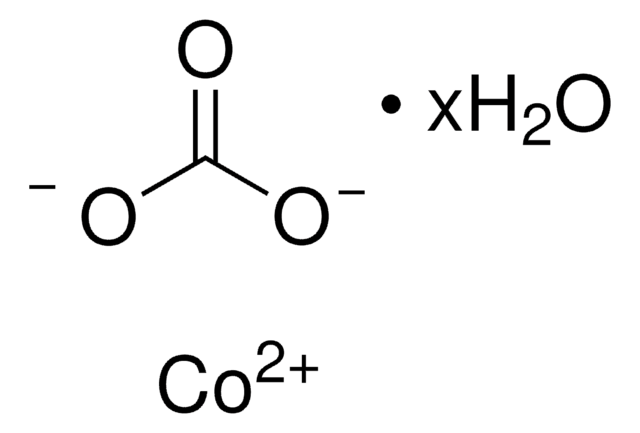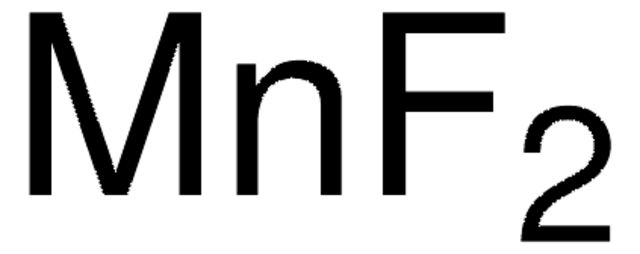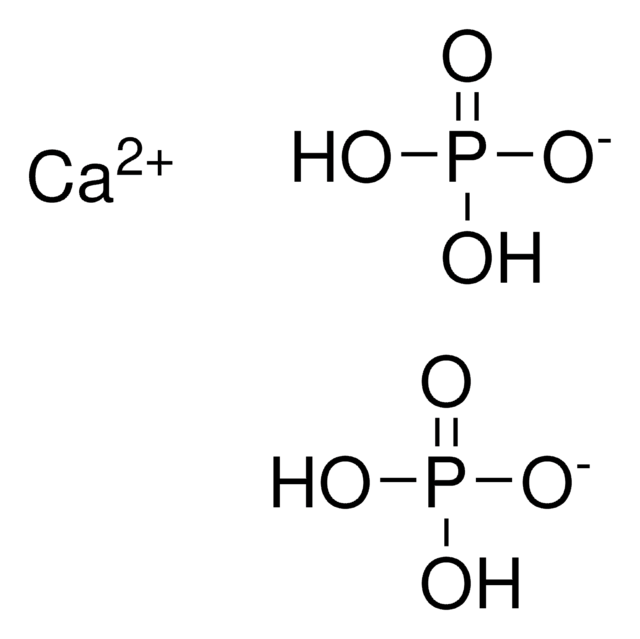Wichtige Dokumente
377449
Mangan(II)-carbonat
≥99.9% trace metals basis
Synonym(e):
Mangan(II)-carbonat, Mangan(2+)-carbonat, Mangancarbonat
About This Item
Empfohlene Produkte
Qualität
for analytical purposes
Qualitätsniveau
Assay
≥99.9% trace metals basis
Form
powder
Verunreinigungen
≤1,000.0 ppm Trace Metal Analysis
mp (Schmelzpunkt)
>200 °C (lit.)
Löslichkeit
dilute aqueous acid: slightly soluble(lit.)
Dichte
3.12 g/mL at 25 °C (lit.)
SMILES String
[Mn++].[O-]C([O-])=O
InChI
1S/CH2O3.Mn/c2-1(3)4;/h(H2,2,3,4);/q;+2/p-2
InChIKey
XMWCXZJXESXBBY-UHFFFAOYSA-L
Suchen Sie nach ähnlichen Produkten? Aufrufen Leitfaden zum Produktvergleich
Verwandte Kategorien
Allgemeine Beschreibung
Anwendung
- Ein Material für Primärelektroden in asymmetrischen Superkondensatoren zur Verbesserung der Ladungsspeicherkapazität und der Gesamtleistung der Superkondensatoren.
- Ein Vorprodukt zur Synthese von Manganoxid, das als Komponente in verschiedenen elektrochemischen Anwendungen verwendet wird, einschließlich Batterien und Superkondensatoren.
- Ein Vorläufermaterial für die Synthese von mit Stickstoff dotierten Mangankarbonat-Mikrosphären, die reich an Sauerstofflücken sind (MnCO2@N). Diese Mikrosphären werden dann als Kathodenmaterial in wässrigen Zink-Ionen-Batterien (ZIBs) verwendet, um deren elektrochemische Leistung zu verbessern.
- Ein potenzieller Elektrokatalysator für die Sauerstoffentwicklungsreaktion (OER) in Wasserspaltungsanwendungen.
Lagerklassenschlüssel
13 - Non Combustible Solids
WGK
WGK 3
Flammpunkt (°F)
Not applicable
Flammpunkt (°C)
Not applicable
Persönliche Schutzausrüstung
Eyeshields, Gloves, type N95 (US)
Hier finden Sie alle aktuellen Versionen:
Besitzen Sie dieses Produkt bereits?
In der Dokumentenbibliothek finden Sie die Dokumentation zu den Produkten, die Sie kürzlich erworben haben.
Kunden haben sich ebenfalls angesehen
Artikel
Recently, layer-by-layer (LbL) assembly has emerged as a versatile, gentle and, simple method for immobilization of functional molecules in an easily controllable thin film morphology.1,2 In this short review, we introduce recent advances in functional systems fabricated by using the mild, yet adaptable LbL technique.
Thermoelectric Performance of Perovskite-type Oxide Materials
The prevailing strategies for heat and electric-power production that rely on fossil and fission fuels are having a negative impact on the environment and on our living conditions.
Unser Team von Wissenschaftlern verfügt über Erfahrung in allen Forschungsbereichen einschließlich Life Science, Materialwissenschaften, chemischer Synthese, Chromatographie, Analytik und vielen mehr..
Setzen Sie sich mit dem technischen Dienst in Verbindung.












